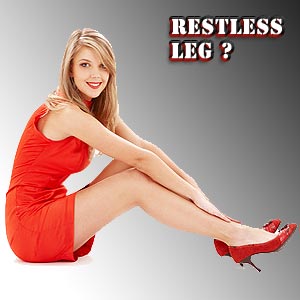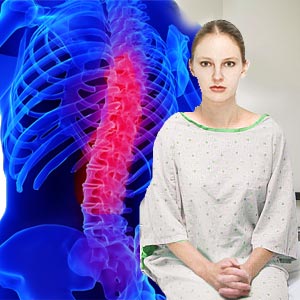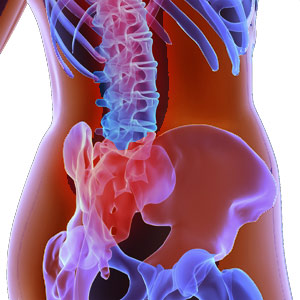Restless Leg Syndrome Symptoms

Restless leg syndrome (RLS) involves an urge to restlessly move the legs in order to stop certain unpleasant sensations. Affected part of the legs experience itching, tickle or burning sensation. Typically, the victim can suffer from RLS at all times of the day and more so in the night.
Moving the legs restlessly under such a condition does not give permanent relief but it may alleviate it temporarily. Persons suffering from RLS find it difficult to sleep restfully as the desire to move the legs is constant causing distress.
Causes of restless muscle syndrome
Restless leg syndrome occurs most often in middle aged and older adults. Stress can make it worse. In many patients, the cause of RLS is not known. Some of the causes for RLS are:
- Twitching muscles in the legs.
- Some doctors opine that nervous and circulatory systems are involved in some way in this disorder.
- Muscular and arterial spasmodic contractions may also be a reason.
- Tense nervous system and hypersensitivity are also linked to RLS.
- Sometimes the nervous system may be irritated and disturbed due to stress and alkaloid compounds found in substances like coffee or cola drinks that are consumed.
- If the victim stops using the medications prescribed, the disorder gets worse and can lead to tension. The nervous disorder can also lead to anxiety and other forms of psychological symptoms.
- In women, birth control and other contraceptive pills can aggravate circulatory problems.
- Deficiencies of folic acid may also bring RLS and levels of B complex vitamin may plummet in the body because of malabsorption syndrome.
- The presence of an underlying and hidden food allergy could also be a reason for RLS in some. This is due to the fact that the human immune system can react to certain foods and foreign or toxic compounds violently resulting in food allergy.
RLS can occur with patients with:
- Peripheral neuropathy
- Chronic kidney disease
- Parkinson's disease
- Pregnancy
- Iron deficiency and
-
Use of certain medications.
A particular form of RLS is passed down in families. Symptoms start at a younger age and the abnormal gene is yet to be identified.
Symptoms of RLS
Victims of RLS describe many different symptoms including leg pain, cramps, tingling, burning and aches. The most prominent symptoms are uncomfortable sensations of creeping, crawling, aching, pulling, searing and tingling which propel the victim to move the legs.
These sensations usually occur at night when lying down or even during the day when sitting in a particular place for long duration of time. Because of lack of sleep, children and adults may be very drowsy, irritable, and aggressive during daytime.
The sensations are likely to last for at least an hour. The sensations could also occur in the upper leg, feet or arms. An irresistible urge to walk or move the legs almost relieves the discomfort. The symptoms can be found to worsen during stress or emotional turmoil. RLS usually begins slowly. But over a period of time, the legs become more affected.
Diagnosis of RLS
As such there is no specific examination for RLS and the healthcare provider may not be able to find any abnormalities, unless the patient also exhibits peripheral nerve disease. Complete blood count and serum ferritin are done to rule out anemia and iron deficiency. In the US, the National Institute of Health has prescribed four criteria for diagnosis of RLS namely:
- A strong urge to move the legs.
- Symptoms get worse when the victim is inactive.
- Relief from moving.
- Symptoms get worse in the evening or at night.
There are many conditions that mimic the symptoms of RLS. These include Parkinson's disease, fibromyalgia, muscle diseases, joint conditions, nerve problems and circulation difficulties. In children, most often RLS is misdiagnosed as 'growing pains'.
Treatment of RLS
Although there is no known cure for restless leg syndrome, the aim is to reduce the stress and help the muscles to relax. Following techniques may help:
- Warm baths
- Gentle stretching exercises
- Massage
In case the victim's sleep is severely disrupted, the healthcare provider may prescribe medications or tranquilizers. Patients with iron deficiency can receive iron supplements. Some low doses of narcotics may assist in relieving symptoms of RLS.
Treatment for RLS is also directed toward any underlying illnesses, if known. For instance, if blood tests reveal iron deficiency as the underlying cause then iron tablets may be prescribed. If varicose veins are thought to be the cause, then surgery to repair the circulation may be considered.
Stopping smoking can significantly diminish or prevent symptoms. Getting better sleep and exercise can help some victims. It is often observed that pregnant women, who do not sleep well at night, may develop RLS.
Natural remedies for RLS
- Warm and cold baths
- Electric nerve stimulation
- Oral magnesium
- Acupuncture
- Intake of quinine water at bed time.
- Vitamin E is advised to tackle problems like cramps in the legs.
- Folic acid is another effective supplement package along with Vitamin E.
Homeopathic remedies are found to greatly alleviate to a great extent the symptoms of RLS. Home remedies for RLS treatment include:
- Aconite is used in homeopathic treatment of individuals suffering from RLS in whom psychological symptoms are very evident. The person may have panic attacks, suffer from anxiety and emotionally unstable.
- Arsenicum is used to control cramping sensations in the body.
- Causticum helps control burning and aching sensations in the legs and warm applications can improve these symptoms.
- Ignatia can alleviate symptoms of psychological and mental kind in nervous and sensitive individuals.
- Rhustox controls extreme restlessness, constant need to change positions when the person is extremely fidgety and keeps walking around the room at night.
- Sulfur is for individuals who complain of restlessness and burning sensations in the legs, when twitching and jerking motions of the legs are displayed.
- Zincum met is for extreme restlessness and when irritation is persistent. RLS gets aggravated with alcohol and wine in particular.
Prevention of RLS
Techniques to promote relaxation of muscles and stress reduction may reduce the incidence of RLS. RLS is not dangerous or life threatening and is also not a sign of a serious disorder. However, it can cause insomnia by disrupting sleep and leave the victim thoroughly uncomfortable.
What the doctors advise to keep legs calmer?
Moving the legs during the day can help ease restlessness at night. Walking, jogging or cycling daily is advised. However, do not exercise immediately before bed time as this can make it harder to get sleep.
Giving a vigorous massage or a muscle rub to the legs eases the discomfort. Some people have found a technique called progressive relaxation in which the whole bodily muscles are relaxed one at a time. Legs have to be taught to relax over a period of time.
Taking a warm bath before bed time can ease discomfort to some extent and also relax the body and mind and keep legs calmer. Avoid drinking coffee or alcohol at bed time.
Top of the Page: Restless Leg Syndrome Symptoms
Tags:#restless leg #restless leg syndrome #restless leg syndrome treatment #restless leg syndrome symptoms #restless leg syndrome home remedies #restless leg treatment #restless leg syndrome natural remedies
 Slipped Disc
Slipped Disc Knee Replacement for Women
Rheumatoid Arthritis
Osteoarthritis
Drop Wrist Deformity
Ankylosing Spondylitis
Spinal Decompression
Scoliosis Treatment
Cause of Osteoporosis
Osteopenia
Bone Density Test
Disc Herniation
Tennis Elbow Symptoms
Restless Leg Syndrome Symptoms
Other health topics in TargetWoman Women Health section:
General Women Health

Women Health Tips - Women Health - key to understanding your health ...
Cardiac Care
Women's Heart Attack Symptoms - Identify heart problems...
Skin Diseases
Stress Hives - Red itchy spots ...
Women Disorders
Endocrine Disorder - Play a key role in overall wellbeing ...
Women's Reproductive Health
Testosterone Cream for Women - Hormone replacement option ...
Pregnancy
Pregnancy - Regulate your lifestyle to accommodate the needs of pregnancy ...
Head and Face
Sinus Infection - Nearly 1 of every 7 Americans suffer from ....
Women and Bone Care

Slipped Disc - Prevent injury, reduce pain ...
Menstrual Disorders
Enlarged Uterus - Uterus larger than normal size ...
Female Urinary Problems
Bladder Problems in Women - Treatable and curable ...
Gastrointestinal Disorders
Causes of Stomach Ulcers - Burning feeling in the gut ...
Respiratory Disorders
Lung function Test - How well do you breathe ...
Sleep Management

Insomnia and Weight Gain - Sleep it off ...
Psychological Disorders in Women
Mood swings and women - Not going crazy ...
Supplements for Women
Women's Vitamins - Wellness needs...
Natural Remedies

Natural Diuretic - Flush out toxins ...
Alternative Therapy
Acupuncture Point - Feel the pins and needles ...
Women Health Directory
Top of the Page: Restless Leg Syndrome Symptoms
Popularity Index: 102,012

